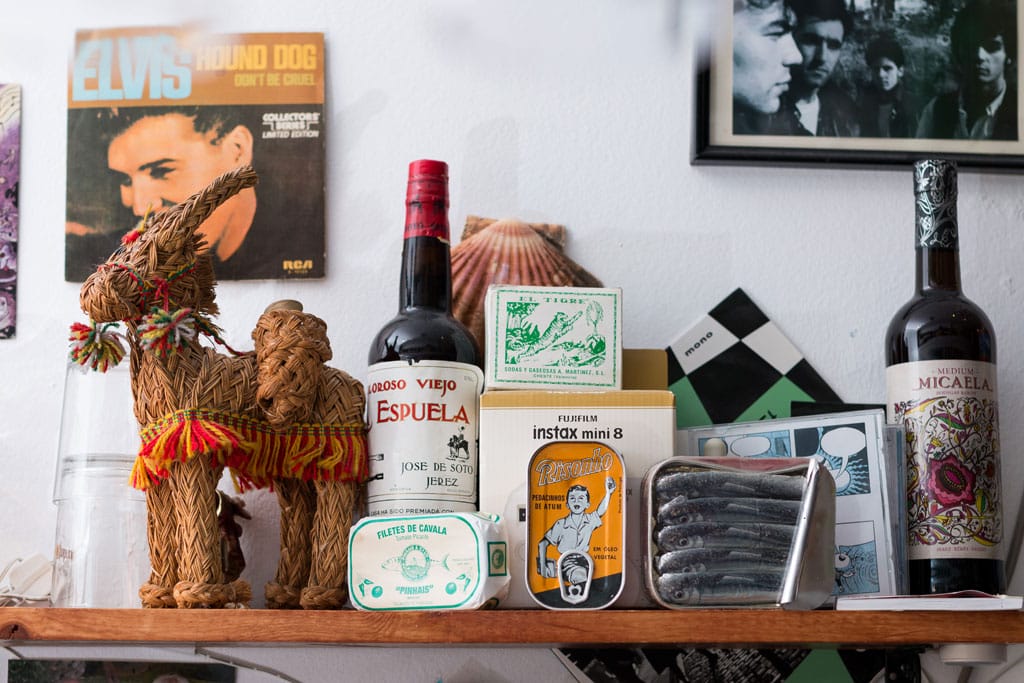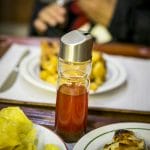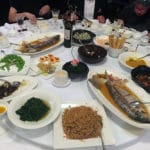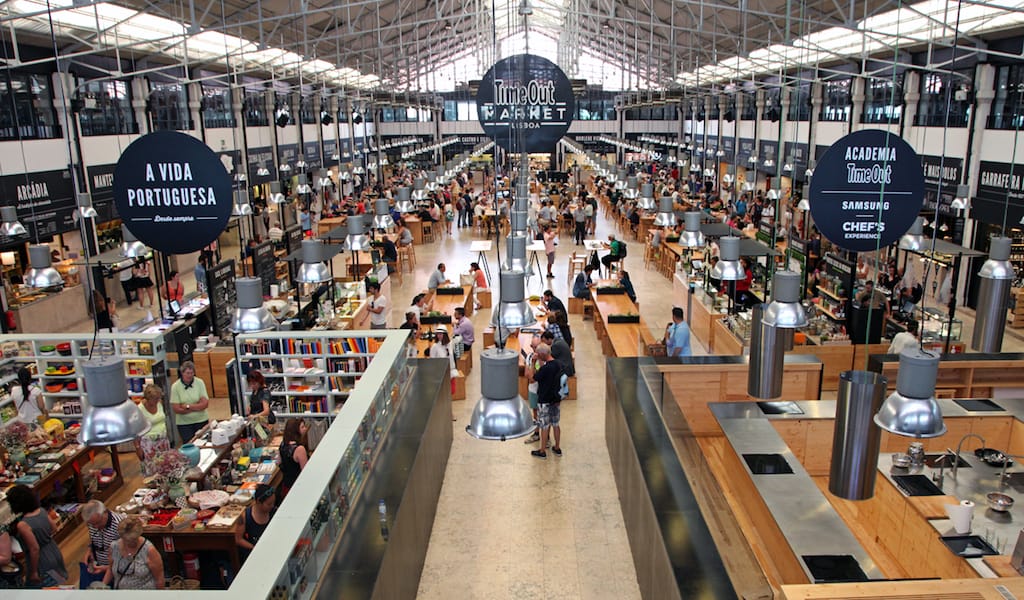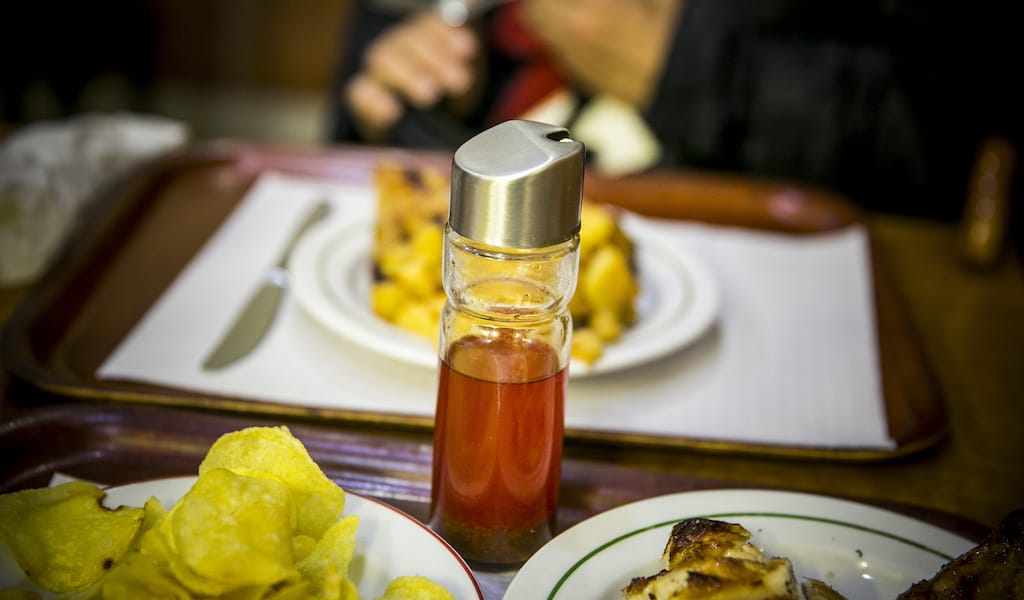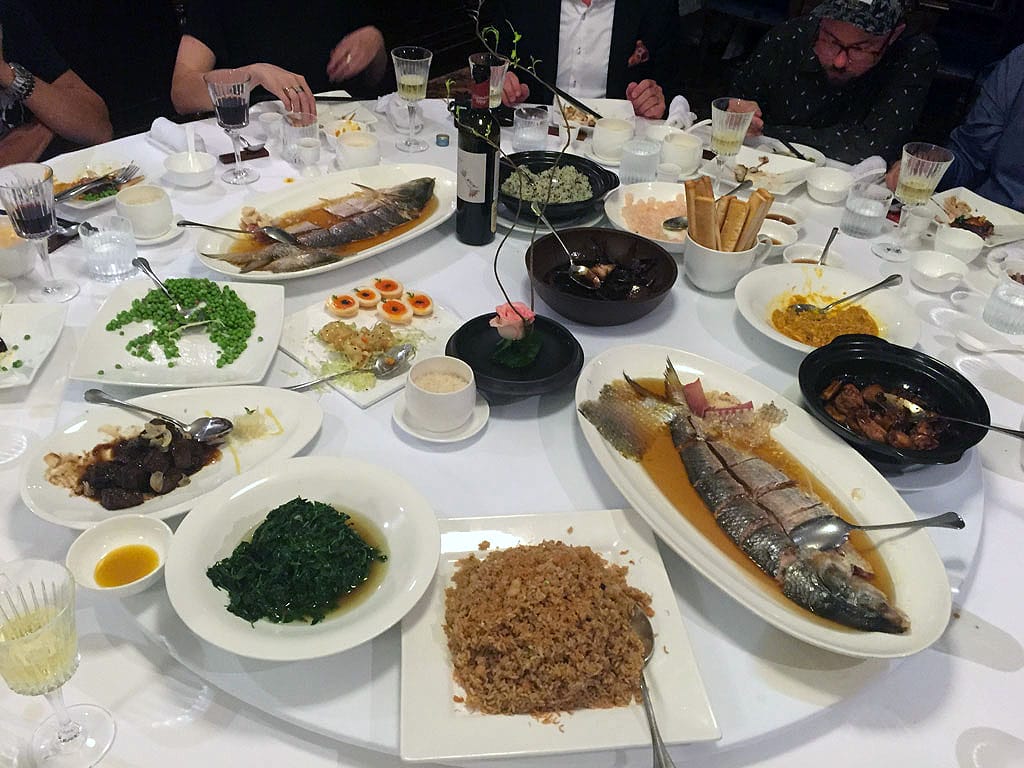“I missed the traditional foods I grew up with in Cádiz,” said Natalia García, a young woman with dark hair, bright red lipstick and a smattering of tattoos across her upper arm. “I was actually born in Germany, and my mother was a professional cook, so I was always around food,” she tells us. Despite the German heritage, García’s strong accent and open, friendly demeanor are pure Andalusia. “Whenever I told people [in Barcelona] I was from Cádiz, they would get excited. Everyone loves Cádiz, especially the food.”
After living in Barcelona for just one year, García decided to open La Chana, a bar that reminded her of home, in the heart of the non-touristy neighborhood of Poble Sec. However, instead of the classic flamenco music and antique feeling found in many traditional bars of this kind in her hometown, García merged her favorite tapas gaditanas (tapas from Cádiz) with classic rock ’n’ roll culture, and La Chana sprang to life.
“I wanted a more cool, urban feel to my bar,” she explained to us. “Chana is a word we used in Spain in the 1980s to say something was cool. Later we realized that Chana was also the name of a famous Catalan flamenco dancer, and the name fit our bar even better! [Chana] even came to visit us, and we hung her picture on the wall.” She gestured to the quirky collection of, old, framed photos that offer a playful nod to the classic kitschy decor of many a bar andaluz.
Indeed, La Chana, though tiny, is full of  larger-than-life characters. García described how her bar has become somewhat of a meeting point – a gastronomic community center of sorts – for other gaditanos and sevillanos living in Barcelona who long for a taste of authentic southern specialties. She and her small staff serve up dishes rarely found in this part of Spain, as well as a variety of cheeses, sausages and cured meats from Spain’s southwest.
larger-than-life characters. García described how her bar has become somewhat of a meeting point – a gastronomic community center of sorts – for other gaditanos and sevillanos living in Barcelona who long for a taste of authentic southern specialties. She and her small staff serve up dishes rarely found in this part of Spain, as well as a variety of cheeses, sausages and cured meats from Spain’s southwest.
The wine list proudly declares, En Andalucia, tenemos tinto! (“In Andalusia, we have red wine!”), an acknowledgement of the fact that few people think of the south as a red wine region, due to the warm climate and the fame of sweet and fortified wines like the vinos de Jerez (sherry). The wine selection includes reds from Córdoba, Cádiz, Almería and Málaga, as well as whites from Cádiz, Sanlúcar de Barrameda and fino sherry from Jerez de la Frontera.
“We also have a great vermouth from the Andalusian town of Montilla,” García said, as she pulled a slender bottle down from atop the age-worn oak barrel. With a pleasantly surprising bitterness that balanced the naturally sweet and syrupy blend and its powerful ripe cherry flavor, this intriguing vermouth was like nothing we had sampled from Catalan producers.
On García’s recommendation, we launched into our meal with a cold glass of deliciously crisp and light manzanilla, a dry, fortified wine from the yeast-filled cellars of Sanlúcar de Barrameda, a seaside town whose salty air permeates everything. The wines from Sanlúcar have a refreshing, almost saline quality. Made from the palomino fino grape, manzanilla is one of the most popular aperitivo wines of the region, pairing excellently with olives, almonds and fried or preserved seafood.
In Andalusia – and most other parts of Spain – fried food is a way of life, so we began in typical fashion with an assortment of crispy bites of seafood. The chocos (cuttlefish), boquerones (fried anchovies), cazón en adobo (fried dogfish marinated in vinegar) and ortiguillas (sea anemone) were all fresh and tasty, served on small plates with a little pile of breadsticks as accompaniment. While the fried dishes are good, La Chana’s truly special offering is its list of imported products from the South. This section of the menu, De Barbate al Poble Sec, is chock-full of unique, delectable treasures.
Barbate, a fishing village located an hour south of Cádiz at the mouth of the Strait of Gibraltar, is world-famous for its tuna. The fishermen of Barbate have been catching Atlantic bluefin using a technique known as almadraba since the time of the Phoenicians, some 3,000 years ago. Almadraba (a word derived from the Arabic for “to strike”) is a method in which a complex maze of nets is placed in the tunas’ migratory path as they swim into the Mediterranean in the spring, laden with plenty of insulating fat and ready to spawn. The giant tuna swim through the nets until they reach a central area, where the fishermen’s boats are ready and waiting. Because the fishermen have the tuna trapped, they can lift the nets and choose to catch only the largest fish, setting the rest free and keeping the fishery sustainable.
While most of the tuna caught in Barbate is exported to Japan, the domestic consumption is quite large and comes mainly in the form of salt-cured tuna, or mojama de Barbate. Good mojama isn’t dry and tough like jerky, but supple and delicate, with a slight, iron-rich tuna flavor. Sliced thin and dressed with olive oil (and perhaps scattered with a few marcona almonds as garnish), this is a must-try at La Chana.
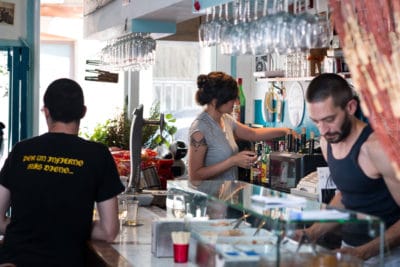 Along with the mojama, we passed around a dish of hueva de maruca, the bright orange salted and pressed roe sack of the ling fish, which had an interesting, slightly waxy texture and bold flavor. We absolutely loved the chicharrones de Chiclana, rich pork belly that had been slowly cooked in pork fat and spices, then sliced thin and served at room temperature with a sprinkling of black pepper. “In Chiclana, the chicharrones are different than other parts of Spain,” García explained. “In Chiclana they use the pork belly and confit it, while elsewhere they are deep-fried and have skin on them as well.”
Along with the mojama, we passed around a dish of hueva de maruca, the bright orange salted and pressed roe sack of the ling fish, which had an interesting, slightly waxy texture and bold flavor. We absolutely loved the chicharrones de Chiclana, rich pork belly that had been slowly cooked in pork fat and spices, then sliced thin and served at room temperature with a sprinkling of black pepper. “In Chiclana, the chicharrones are different than other parts of Spain,” García explained. “In Chiclana they use the pork belly and confit it, while elsewhere they are deep-fried and have skin on them as well.”
In addition to the regular tapas offerings, La Chana has off-menu items all year round. We had the pleasure of trying García’s atún anchoado, tender tuna loin that is salt-cured, rinsed, then marinated in olive oil and spices before being eaten. On the day we visited, the kitchen also had corazón de atún en salazón (salt-cured tuna heart).
“We change the menu items with the seasons,” García said, “except the salmorejo” – a chilled, thick purée similar to gazpacho – “which we serve all year, by popular demand. We see what is fresh in the market, and it gives us ideas, as do our visits to Cádiz, which always awaken our senses and send us back to Barcelona, excited and full of new inspiration.”
Published on July 20, 2016
Related stories
March 16, 2018
Lisbon“It’s good for tourists, not for us.” While this can sadly be said about many things, Anabela, the woman we are speaking to, is referring to the transformation of Mercado da Ribeira, Lisbon’s historic public market, where she co-runs a small grocery store. Originally built as a predominantly wholesale food, fish and flower market in…
September 26, 2019
LisbonOn our Hidden Flavors of the Hillside walk in Lisbon, we sample charcoal-grilled piri piri chicken paired with house-made hot sauces, whose recipes traveled to Lisbon from Angola and Mozambique after the 1974 revolution. So, how hot can you go?
December 8, 2016
ShanghaiShanghai's dining scene was abuzz with controversy this fall as the Michelin Guide landed in the city for the first time ever. You can't please everyone, but no one seemed happy with the disproportionate number of Cantonese restaurants that were recognized. Thankfully, there's still plenty of delicious variety in the city, starred or not, and…







































